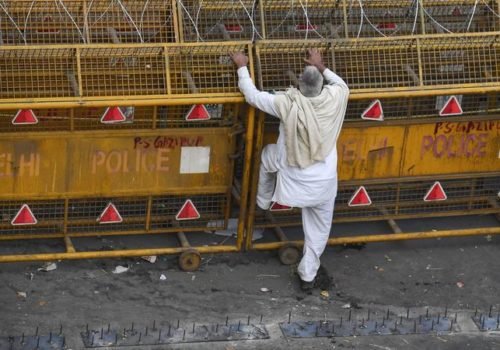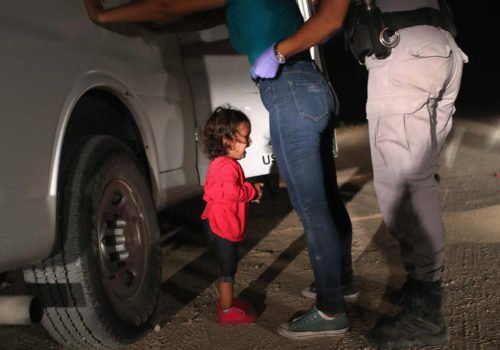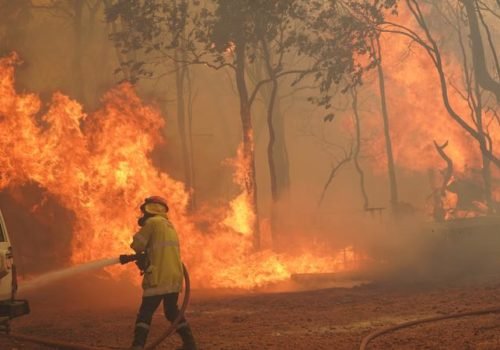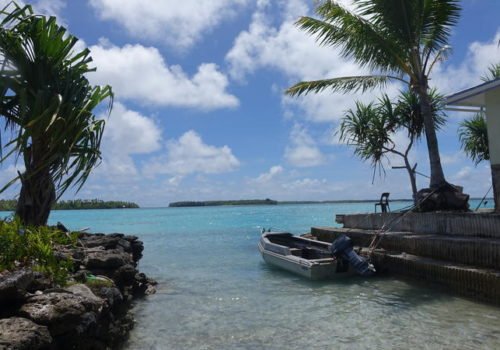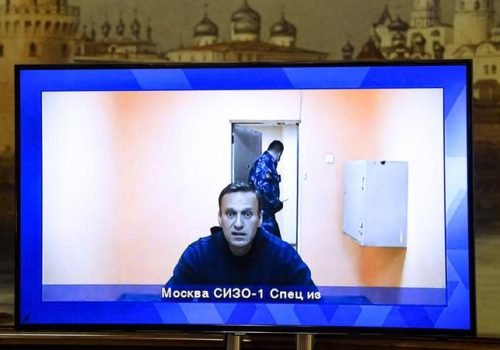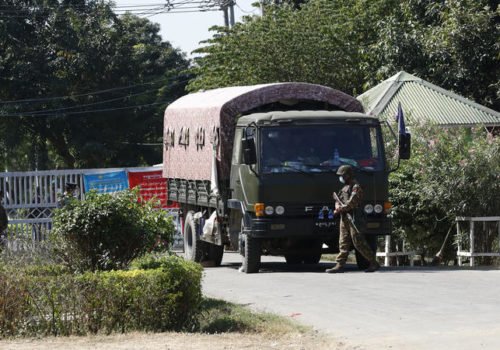India farmer protests: 'War-like fortification' to protect Delhi
Iron nails, rods, barbed wire, boulders and makeshift walls are being used to barricade Delhi's borders against thousands of protesting farmers.
A farmer stands next to police barricades along a blocked highway as farmers continue to protest against the government's recent agricultural reforms at Delhi-Uttar Pradesh state border in Ghaziabad on 2 February 2021. Photo: AFP
The beefed-up security - called "war-like" by some farmers - comes amid a tense standoff with the government over new agricultural laws.
The protest, now in its third month, presents the biggest challenge Prime Minister Narendra Modi has faced.
His government offered to suspend the laws but farmers want them repealed.
Things turned violent last week when protesters and police clashed after thousands of farmers entered Delhi as part of a massive tractor rally. Dozens of officers were injured and one protester died.
Farmers' groups and union leaders condemned the violence but said they would not call off the protest.
Instead, they they plan to block highways leading into the national capital on Saturday. Meanwhile, the situation at the protest sites - Singhu, Ghazipur and Tikri - has steadily worsened.
Delhi and the neighbouring state of Uttar Pradesh have deployed officers and drones at the sites, and have begun blocking the area around the protests, effectively cutting the farmers off from roads into the city.
Delhi Police Commissioner SN Shrivastava defended the barricading.
"I am surprised that when tractors were used, police were attacked, barricades were broken on 26 January, no questions were raised," he told ANI news agency.
"What did we do now? We have just strengthened barricading so that it's not broken again".
Indian police beat a farmer as they continue to protest at the Delhi-Haryana state border in Singhu on 29 January 2021. Photo: AFP
At the Delhi-Haryana border, police officials have blocked roads with large concrete slabs and embedded huge iron nails across the breadth of the road leading up to the Tikri protest site.
Anoop Chanaut, a member of the Kisan (Farmer) Social Army, told BBC Hindi that the government says we are just a phone call away.
"But then they install barricading as if this is an international border.
"We are sitting peacefully on our front and we will remain seated. But if we want to move forward to surround the parliament, these barricades will not stop us," farmers told BBC Hindi.
Many on social media likened the warlike fortification at the protest sites to fencing at international borders. #FencinglikeChinaPak rose to the top of India twitter trends as many commented on the excessive use of security paraphernalia by police officials.
The protest site at the Delhi-Uttar Pradesh (UP) border has been heavily fortified since Sunday evening. All roads going from UP to Delhi have been closed. Even the walkways and footpaths have been blocked.
Spools of razor wire, heavy metal barricading, layers of stone boulders and rows of concrete barricades line the main roads at Ghazipur and Singhu.
Barbed wire coils and concrete slabs block the roads here. Like Tikri, nails were installed at the Ghazipur border too.
Bharatiya Kisan Union leader Rakesh Tikait eats lunch near police barricades during farmer's protest at the Delhi-Ghazipur border on 2 February 2021. Photo: AFP
Police officials at the protest site told the BBC that they received orders to ramp up security there. Farmers say that the police have taken these measures so that the number of tents at the site does not increase.
BBC Hindi's Samiratmaj Mishra reported that an ambulance had to turn back due to the heavy barricading of barbed wire and concrete blocks.
On Monday evening, concrete was poured between stone barriers to keep them in place. Alternating rows of metal and stone barriers criss-cross the main highway.
Video and pictures from the protest sites were shared by many on Twitter, Facebook and Instagram amid outrage against what many see as heavy-handed security.
Barricading at the Singhu border stretches to 2km on the Delhi side. The road has been dug up. Selected vehicles are being allowed to go beyond the barricading, but media vehicles are not allowed in. All routes have been blocked.
A farmer leader present at the Singhu site told BBC Hindi that "the Modi government is building a wall on the border of Delhi and Haryana, as was announced by Trump on the US and Mexico border".
Farmer leaders here told BBC Hindi that if the government wants to negotiate, it must first create an atmosphere of dialogue.
"The government is taking all inhuman steps. This includes cutting electricity, shutting off water and shutting down the internet. Now the government is barricading. This should stop immediately."
- BBC

